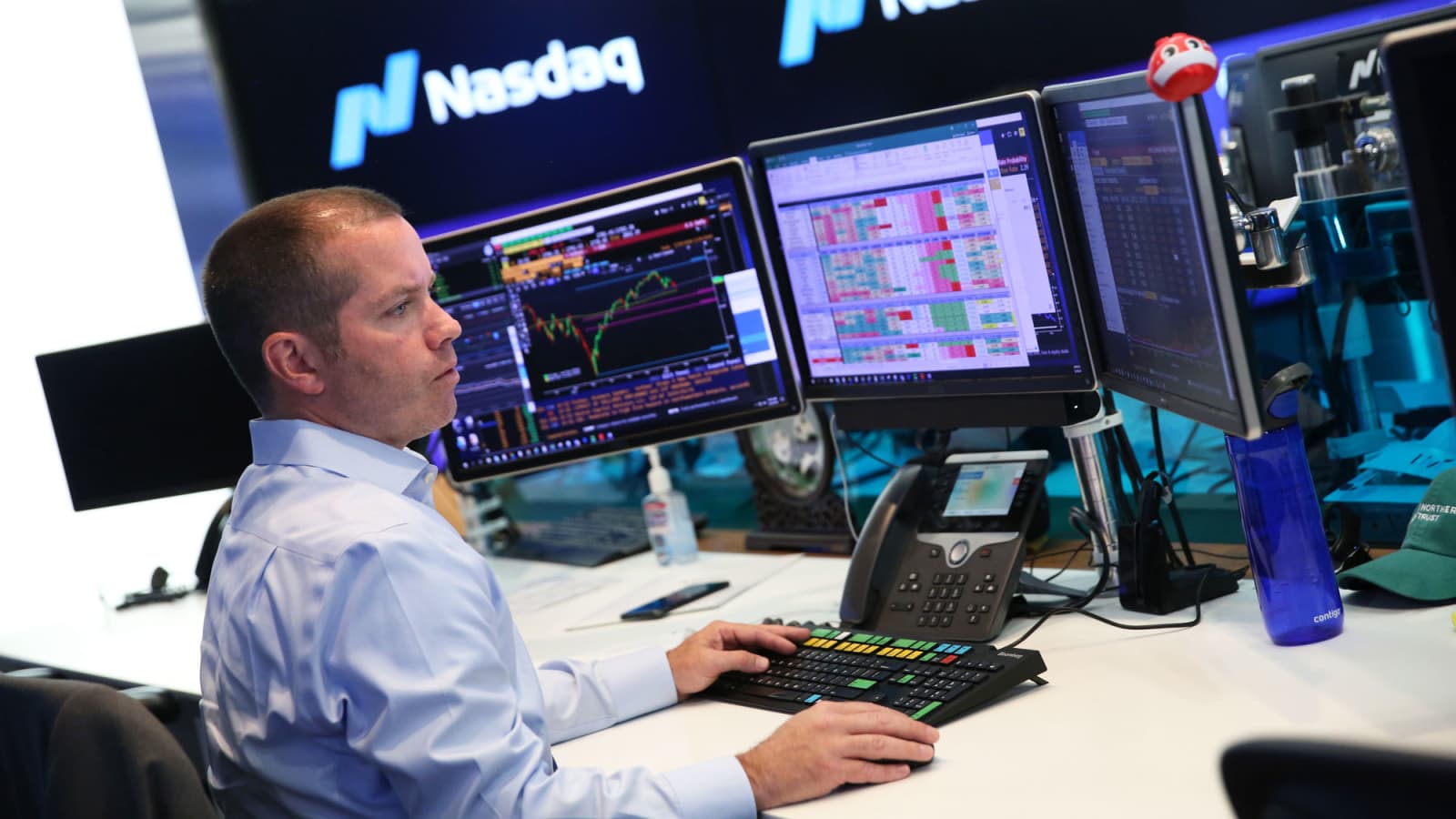For the first time in five years, tech investors aren’t the life of the Wall Street party.

As 2021 winds down, the tech-heavy Nasdaq Composite is up 23% for the year, trailing the S&P 500, which has climbed 28%, through Monday. The last two times the S&P 500 topped the Nasdaq occurred in 2016 and 2011.
The Nasdaq started 2021 strong, picking up where it left off in 2020, almost doubling up the S&P 500′s gains by mid-February. Then trading tailed off with the arrival of the first Covid-19 vaccines, which raised hopes among investors that the U.S. was on the verge of getting through the pandemic, potentially lessening demand for remote work technology, home workout systems, food delivery apps and tech-based living room entertainment.
Next, inflation reared its head, topping 4% in April, then as high as 6.8% in November. The Federal Reserve initially expected rising prices to be transitory, but they persisted, spurring the central bank to take a more engaged stance, citing expectations for rate hikes in 2022.
That’s created a double whammy for high-multiple tech stocks. Investors are worried about the demand side of some of their businesses, and they’re also rotating into sectors of the market that tend to hold up better in a rising rate environment.
“All the stay-at-home, play-at-home, work-from-home stocks were DOA in 2021, like the pandemic didn’t exist anymore,” said Jake Dollarhide, CEO of Longbow Asset Management in Tulsa, Okla. “The last five years, every time it looked like there would be a rotation out of tech, everybody bought the dip — 2021 will go down as the year that investors did not buy the dip in tech.
Within the S&P 500, the top-performing subgroup of the year was energy, reflecting soaring gas prices. Next came real estate, which delivers high dividends and has benefited from surging demand for warehouse space and residential properties.
Tech isn’t too far behind, mostly because mega-cap companies Apple and Microsoft have held up well and make up so much of the tech subgroup, and the overall S&P 500. Alphabet and Meta Platforms (formerly Facebook) are part of the communication services sub-index and Amazon is in the consumer discretionary group. Both have slightly underperformed the broader index.
The main problem for the Nasdaq has been the plunging value of companies that picked up huge market caps in 2020, only to see investors turn against them this year.
Zoom stock has dropped 45% this year, after last year’s 326% increase in revenue led to a quintupling in its stock price. Peloton, meanwhile, has plummeted 76% after revenue growth peaked at 232% in mid-2020, pushing the stock up over 430% for the year.
Twilio, Spotify and Block (formerly Square) have each fallen more than 20% this year and PayPal is down 18%. The WisdomTree Cloud Computing ETF, a basket of publicly traded cloud software companies, is about flat for the year after more than doubling in 2020.
“I pointed out to clients, if you’re heavy tech, you’re likely to underperform the overall market,” said Dollarhide. “But keep in mind how much you’ve overperformed the market the last three to four years,”
In 2020, the Nasdaq climbed 44%, while the S&P 500 rose just 16%. From the end of 2016 to the close of 2020, the Nasdaq won every year, rising a total of 139% compared to the S&P 500′s 68% increase.
[“source=cnbc”]
Tech stocks have four days left to make up that difference, but the last week of the year doesn’t tend to bring much news that would spur an outsized rally. Indexes were up across the board on Monday, with the S&P 500 climbing to a record.
The Nasdaq started 2021 strong, picking up where it left off in 2020, almost doubling up the S&P 500′s gains by mid-February. Then trading tailed off with the arrival of the first Covid-19 vaccines, which raised hopes among investors that the U.S. was on the verge of getting through the pandemic, potentially lessening demand for remote work technology, home workout systems, food delivery apps and tech-based living room entertainment.
Next, inflation reared its head, topping 4% in April, then as high as 6.8% in November. The Federal Reserve initially expected rising prices to be transitory, but they persisted, spurring the central bank to take a more engaged stance, citing expectations for rate hikes in 2022.
That’s created a double whammy for high-multiple tech stocks. Investors are worried about the demand side of some of their businesses, and they’re also rotating into sectors of the market that tend to hold up better in a rising rate environment.
“All the stay-at-home, play-at-home, work-from-home stocks were DOA in 2021, like the pandemic didn’t exist anymore,” said Jake Dollarhide, CEO of Longbow Asset Management in Tulsa, Okla. “The last five years, every time it looked like there would be a rotation out of tech, everybody bought the dip — 2021 will go down as the year that investors did not buy the dip in tech.
